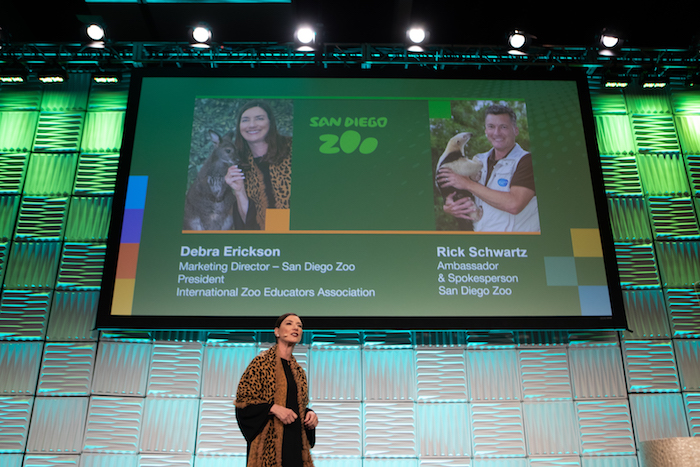The San Diego Zoo Shares the Healing Power of Animals
By Dean Essner
December 2019
According to San Diego Zoo Marketing Director Debra Erickson, the inspiration for San Diego Zoo Kids — a children’s TV network dedicated to sharing the healing power of animals — began with an inspiring email.
The email’s writer was a nurse at a Northern California cancer ward, who had reached out to Erickson to tell her how the Zoo’s live panda cam was providing hope for her ill patients.
“She said, ‘My patients that watch the panda cam have less pain, need less pain meds, are less depressed and sleep through the night,’” said Erickson.
The email sparked an idea in Erickson. Though the Zoo already had a program that brought animals to children’s hospitals, these visits could only happen every so often.
What if there was a way for kids to access 24/7, commercial-free animal content on their hospital TVs?
“These kids don’t just need animals one hour a month,” said Erickson, who said that caregivers attest that San Diego Zoo Kids keeps young patients distracted and happy. “They need animals every day.”
At their General Session on Oct. 22, Erickson and Zoo spokesperson Rick Schwartz shared inspiring stories about the way San Diego Zoo Kids has helped children find joy through difficult periods.
Then, Schwartz and two Zoo handlers brought a few animals out onto the stage so they could see that same joy in the eyes of communicators in the audience.
“These animals have a power to make us feel OK inside,” said Schwartz.
photo credit: albert chau
Backstage Q&A With Debra Erickson and Rick Schwartz
How do you protect and grow a storied brand like the San Diego Zoo? 
Erickson: It is an honor and a challenge to be at the helm of communications for a brand that’s over 103 years old. I feel fortunate I have a skilled team that comes from a variety of different backgrounds. It’s amazing the diversity [we have, and] that we’re able to work together in an integrated fashion with the rest of the members of the marketing team to come up with, and prioritize, the stories that we feel are most important to share with the outside world.
Schwartz: The nice thing about our message and mission as an organization is that it attracts people with that same passion. It doesn’t even feel like you have employees out there parroting back standardized message points they’re supposed to say. It is a part of who we are.
How do you use social media to tell the Zoo’s story?
Schwartz: Part of storytelling is to have something that can get somebody hooked. If I, as an individual on my zookeeper account, or our organization, as San Diego Zoo or Safari Park, only kept hammering away at the challenges that wildlife faces, you would quickly make for an audience that doesn’t want to tune in anymore because those stories are sad, and I’m not on my phone to be sad.
We have to find that delicate balance of having some fun, like animal puns and cute pictures, but also reinforcing that that’s not the only reason we’re here. We are an organization that recognizes the challenges that wildlife faces… and [encourages our audience to] join us in their preservation. That’s the foundation of the angles we take in social media.
Erickson: A really important factor with social media is measurement, and we obviously measure every month. It’s challenging — we have two people right now and we have 18 platforms.
What is the most popular zoo animal on social media?
Schwartz: Well, in all fairness, we have a very large quiver of awesome animals.
Erickson: How about for the month of September?
Schwartz: There you go, we can use our metrics!
Erickson: It’s Mkhaya, the year-old female baby elephant at Safari Park — over 2 million views [on social media]. So Mkhaya is the queen of social in the month of September. — Amy Jacques and Dean Essner



